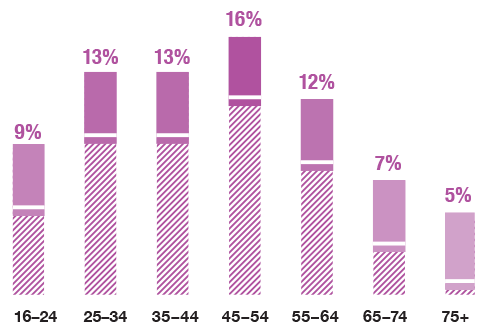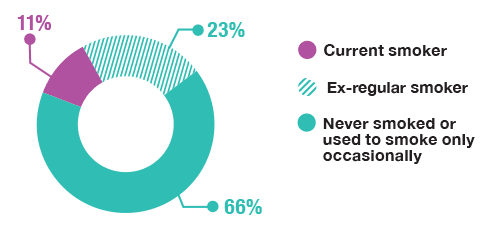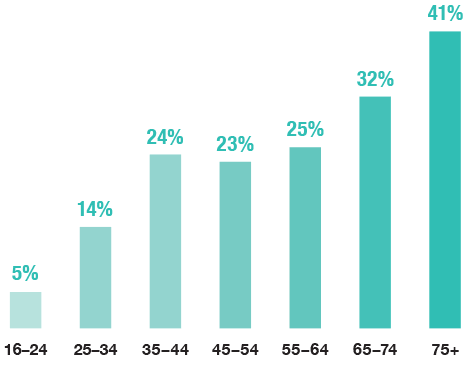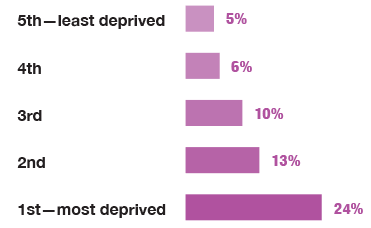The Scottish Health Survey 2021: summary report
Key findings from the Scottish Health Survey 2021 report.
This document is part of a collection
Chapter 7 Smoking
Smoking rates have declined steadily since 20031, with 11% of adults identifying as current smokers in 2021.
12% Men
11% Women
The mean number of cigarettes smoked per day by current smokers did not differ significantly by sex in 2021.
10.5 among all adults who smoked
10.8 among men who smoked
10.1 among women who smoked
Smoking prevalence was highest among those aged 45-54 and lowest among those aged 75+.

Two thirds of adults had never smoked or used to smoke only occasionally and almost one in four adults identified as ex-regular smokers.

The prevalence of ex-regular smokers significantly increased with age.

As in previous years, adults living in the most deprived areas in 2021 were more likely to be current cigarette smokers.

Exposure of adult non-smokers to second-hand smoke has reduced between 2003 and 2021.
Proportion of adult non-smokers reported being exposed to second-hand smoke at work
11% in 2003
3% in 2021
Proportion of adult non-smokers reported being exposed to second-home smoke in their own or other people's homes
25% in 2003
6% in 2021
Over four fifths of non-smokers in 2021 reported not being exposed to second-hand smoke in any public place, at work, in someone’s home or in a car.
82% of adults
In 2021, the proportion of children living in accommodation in which someone regularly smoked indoors was significantly lower than in previous years.

In 2021, the proportion of children exposed to second-hand smoke in their own home was also significantly lower than in previous years.

Current e-cigarette use, in 2021, declined after staying constant each year between 2015 and 2019.
7% 2015-2019
5% 2021
In 2021:
16% of all adults had ever used e-cigarettes
of which
11% had previously used e-cigarettes
5% were current e-cigarette users
Prevalence of current e-cigarette use, in 2021, was highest among those aged 25-34 and lowest among those 75 and over.

Footnote
1 While it is clear that the prevalence of cigarette smoking has been falling since 2003, the size of the drop between 2019 and 2021 should be treated with caution, due to the change in the method of data collection. With falling rates of smoking, an increase in the number of ex-smokers might be expected, but this is not the case.
Contact
There is a problem
Thanks for your feedback